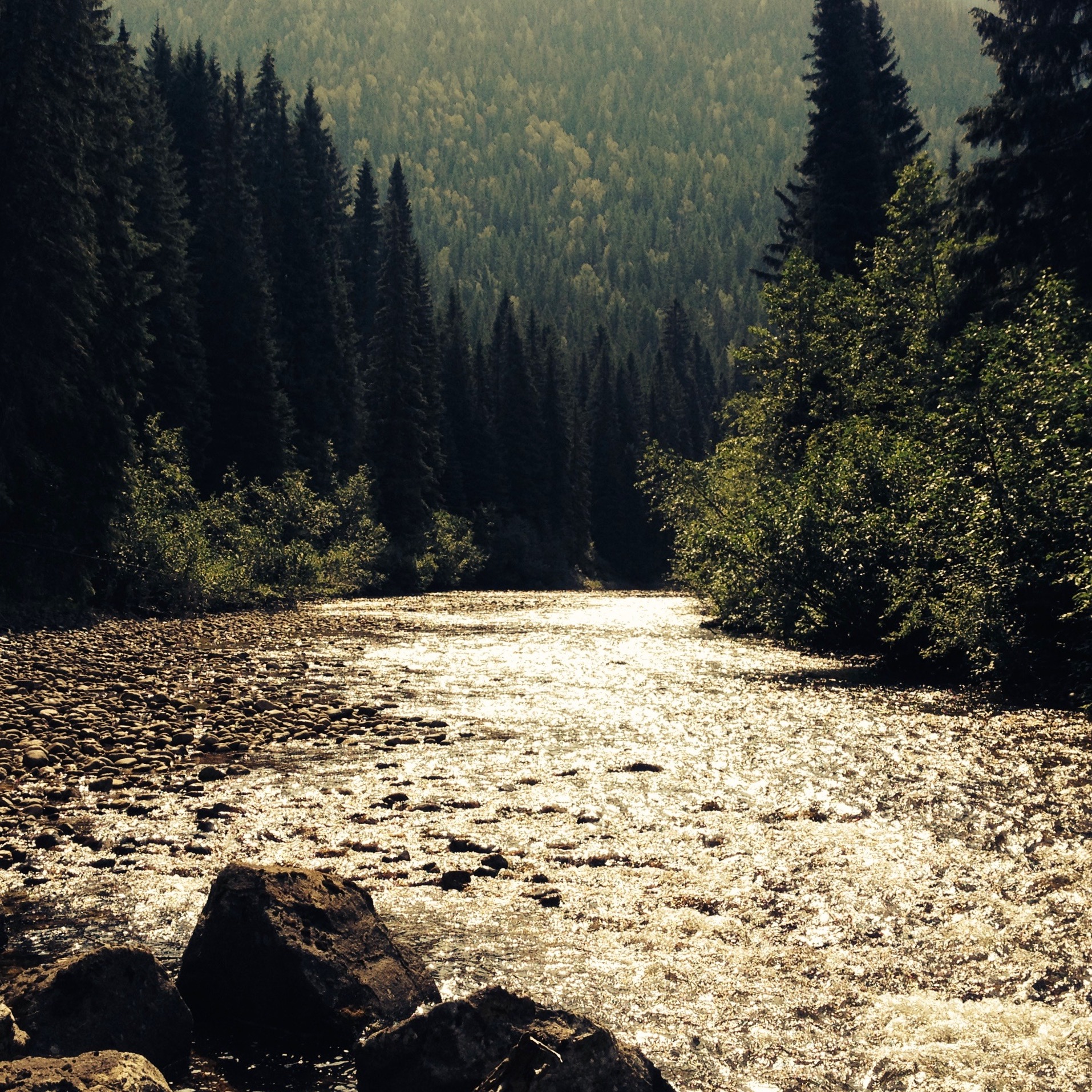PROJECT NOTEBOOK
Observations in Science by Kyle Chezik

BEER CANS, SHOTGUN SHELLS AND A ZAP STRAP
Thompson River Watershed, October 1, 2016
In a typical year I'm concerned about extreme flow events that rip out trees, move boulders or erode entire hillsides thereby burying, destroying or simply displacing the temperature loggers I have set in the stream. More often though, I find myself trying to outwit the all too curious and destructive humans that stumble upon my loggers and feel an overwhelming need to remove, pull apart and destroy these sensors. When a logger is missing I'm often left to rather crude detective work in order to determine the culprit. Discovering only a cut zapstrap, some shotgun shells and beer cans suggest woodsman folk in the act of hijinks. On the other hand, if the cable is present but the PVC pipe protecting the logger is rounded smooth, I lean towards the river, pebble-blasting the logger into submission. Despite my best efforts to cleverly place and attach these temperature loggers, inevitably I lose 5 or 10 out of 100 each year. This year I added another element of chance and asked the weather, yes the WEATHER, to cooperate. In fact this year I committed a camping sin and planned my trip to encounter rain.
Because I'm curious how river networks organize and attenuate climate change, for the past three years I have been collecting temperature data in more than 90 locations throughout the North Thompson River watershed. Stream temperature is governed by many things, one of which is the origin of the water running in the stream. Snow driven streams tend to run cooler than rain driven streams. In order to understand how much of the stream water is derived from snow versus rain we need to drill down and look at the ratio of isotopes present in the hydrogen and oxygen atoms of water. Isotopes? Yeah, isotopes. Rather than bore you with the details of hydrogen and oxygen isotopes it's sufficient to say that snow is heavier than rain. So basically, in order to know what's in the stream I need rain and snow as reference points and then I can ask whether the stream looks more like the snow or more like the rain. Hence, I need some rain.
So this year I set out looking like I was preparing for the fraternity party of the century with funnels, tubing and duct tape. Furthermore, it would seem the weather was all too eager to cooperate as it rained nearly the entire first day allowing us to collect 2 rain samples. Luke, the Moore lab manager and conscript for this years field work, and I were then able to drive around the entire North Thompson River basin and place 18 more rain collectors. In the end we collected 21 rain samples covering a wide range of locations and elevations in the basin. After collecting stream samples at all temperature logging locations, all that is left are snow samples which I hope to collect sometime in February or March.
Oddly, I have never been so happy to be rained on. Although I lost loggers to the destructive nature of humans, to trees being swept off the bank with loggers in tow, and to the river in all it's indifference deciding to place a ton of gravel on one logger, I was very pleased with this years field work. Hopefully with these data in hand we can better understand how rivers integrate varied climate signals and how those signals may be expected to change under future scenarios. Oh and we saw lots of black bears, a porcupine, a skunk, eagle, salmon, but no moose or wolves this year (what the heck!).